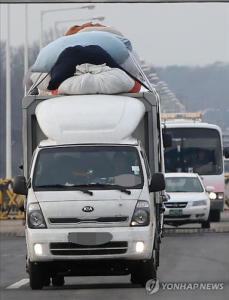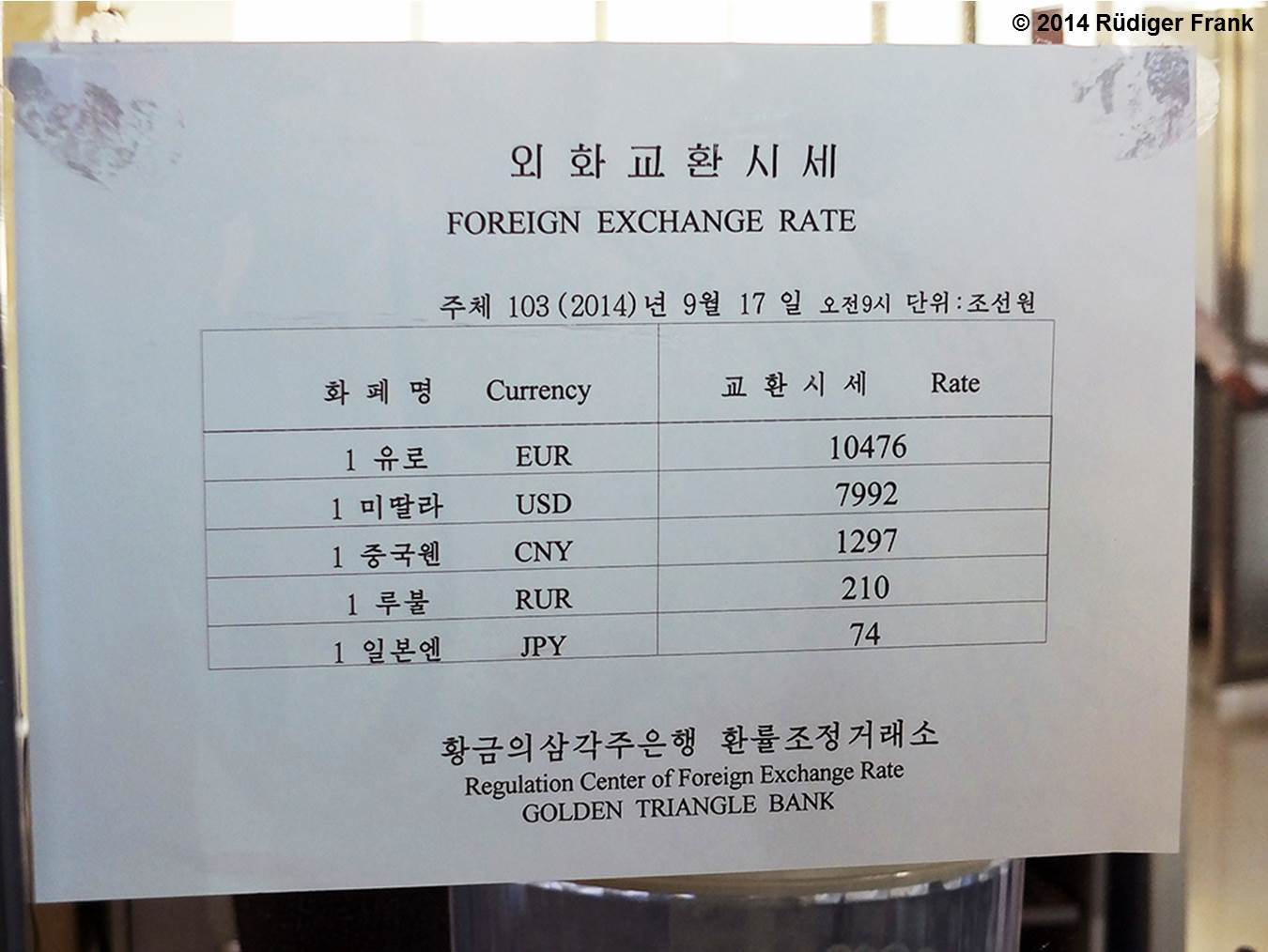The Economics of Kaesong: Examining the Numbers
In response to my article on the Kaesong closure, I have received many helpful comments. In some cases, they confirmed my position; in others, they provided valid criticism that compelled me to check and rethink my arguments.

One of these comments has been published as a separate article at 38 North by Mr. William Brown. He repeats many of the critical points and thus serves as a good reference point for me to respond.
Mr. Brown and I seem to agree that a reformed economy is something to aim for in North Korea. We seem to disagree over how this should be achieved. I use systematic scholarly evidence from China and Vietnam documented in countless books, as well as my own anecdotal evidence on the ground in North Korea and Northeastern China, to argue that “success breeds success,” and that more substantial reforms will follow after smaller reforms have produced positive effects. I disagree with the idea that sustainable and substantial reforms will be the result of an economic crisis. Pressure will NOT do the trick, it rather helps those in Pyongyang who argue that the country is under attack and thus personal (economic and political) interests needs to be subordinated under national (security) interests. The South Korean president seems to have thought the same; she called her policy Trustpolitik in an obvious reference to Willy Brandt’s Ostpolitik. And you know what, in Germany’s case, it worked. Or why would Mr. Franz Josef Strauss, one of West Germany’s most hardline anti-Communists, have together with Helmut Kohl negotiated a 1 billion Deutschmark loan to Erich Honecker in 1983?
On a more technical matter, Mr. Brown questions the statement that the 100 million from Kaesong amount to only 1 percent of North Korean trade. South Korea’s KOTRA is the leading authority on that topic. They publish an annual report which in its latest version says that in 2014, total North Korean trade was US$ 7.6 billion, excluding trade with South Korea, which would be another US$ 1 billion annually. That’s 8.6 billion. Add unrecorded trade. What is this? All one needs to do is take a plane or train from China to NK and see how many goods are transported this way, or drive along the Chinese border with North Korea and keep your eyes open. I did. Or read reports about illegal trade with copper, crystal meth and so forth. Or think about arms trade that would typically be a rather shady business. To be sure, this does not produce reliable numbers but it led me to understand that what finds its way into official statistics is not all there is. Finally, when it comes to North Korea related economic data, I like rounding such figures to make sure everyone understands these are only rough estimates. I think among the big fallacies in North Korean Studies is the pretense of possessing statistics that are correct to the point. That’s why I would usually write 100 million if the number I found or calculated is 120 million, and this is why I used the 10 billion figure as an estimate of North Korea’s foreign trade volume.
Why compare the income from Kaesong to the country’s trade at all? Because trade is North Korea’s only alternative to acquiring hard currency, and because I could not think of any other figure that we could use as a sensible benchmark.
As for the argument that aid prevents change, I agree in principle. Last Sunday was the 250th birthday of a certain Mr. Malthus who thought along a similar line, and who am I to challenge his views. Indeed, we have countless frustrating examples from all over the world where permanent receivership has only created bigger problems. But there are two reasons why I disagree with the notion that doing business with and in North Korea leads to such effects. The first one is that Mr. Brown and others seem to imply that business equals aid (or that talking is a concession). This is simply not true, at least not since the end of preferential trade agreements with socialist countries around 1990. Western companies do business in North Korea because they want to earn money. I have talked to dozens of businessmen (and women), starting in 1991 with a Dutch gentleman who had raw diamonds cut in Pyongyang and then brought them back to Europe. He was anything but a nice, naive left-leaning idealist. That guy wanted to make money, and he did. That’s as simple as it is.
The second reason is that in addition to economic effects, there are political and ideological effects as well. There are pundits who argue that the North Korean propaganda successfully manages to portray Western business in North Korea as a kind of kowtow in front of the leader, as a humble tribute of the barbarian who should be honored by the fact that his present is generously accepted even though it comes from such impure hands. This is total nonsense. North Koreans are under the influence of a strong ideology, but they are neither blind nor idiots.
Did Kaesong “keep alive the state enterprise or command economy system”? No, it did not. It undermined it. Mr. Brown writes: “I’m pretty sure if China had been the recipient of such largess, it also would not have reformed along Deng Xiaoping’s lines in the 1980s.” That’s an interesting point, considering that for example Volkswagen went to China in 1978 and established Shanghai Volkswagen Automotive in 1984. That’s a degree of “largess” that North Korea can only dream about. OK, Volkswagen means “People’s Car,” so perhaps…
Mr. Brown and others are most probably right in pointing out that the 54,000 North Korean workers in Kaesong did not receive a single US dollar; this is why I estimated the NK state’s income from that project at US$ 100 million (US$ 100 a month, times 12 months, times 54000 women, plus X) and not at 30 million. Regarding the “official” rate, take a look at the image below. The same rate is being used officially and openly in Pyongyang in the Chinese Department Store in Kwangbok Street.

Concerning slave labor… Mr. Brown has a point of course, but I have spoken with a number of such “slaves” and their employers in Yanbian/China, and it turns out that they bend over backwards to get these jobs. University graduates from Pyongyang work as waitresses, seamstresses, etc. and consider it a privilege to get such a chance. Now they could of course all have lied to me; at the end of the day I am just a German professor who knows nothing about the reality in North Korea. But that’s the only evidence I have.
Will the North Korean government decide to create more opportunities for firms to operate according to market principles and use at least a portion of their profits, including in hard currency? Yes, I think so. But they will do so partly because of what they have learned from experiments like Kaesong, not despite of it.
And for that US$ 100 million, they will find other sources. Russia and China are more than big enough to fill the gap. I know that many Japanese companies are already anxiously awaiting the day when the government in Tokyo finally declares the abductee issue as resolved, so that they can finally participate in exploiting North Korea’s mineral resources, cheap labor and land border to China. A really bad person would even suggest that the Tokyo government, mindful of the beatings it received over Tokdo/Takeshima and the Comfort Women issue, would silently enjoy the immediate angry protests from Seoul.
Let me close with an argument that I have posted as a comment to the discussion to my Kaesong article.
Why (only) now? If Seoul wins so much by closing the KIZ, why has the zone been left open despite [the sinking of the ROKN] Cheonan in 2010, [shelling of] Yeonpyeong in 2010, the 2009 nuclear test, the 2013 nuclear test, the 2015 landmine, and so forth? Talk is cheap; actions matter. The South Korean government (conservative since 2008) has been unhappy with North Korea’s nuclear program and other policies for many, many years. I believe that they have left Kaesong open until February 2016 is proof that until very recently, their assessment of the costs and benefits of the zone corresponded with mine. I wonder how and why this has changed, and would love to hear more about it.
